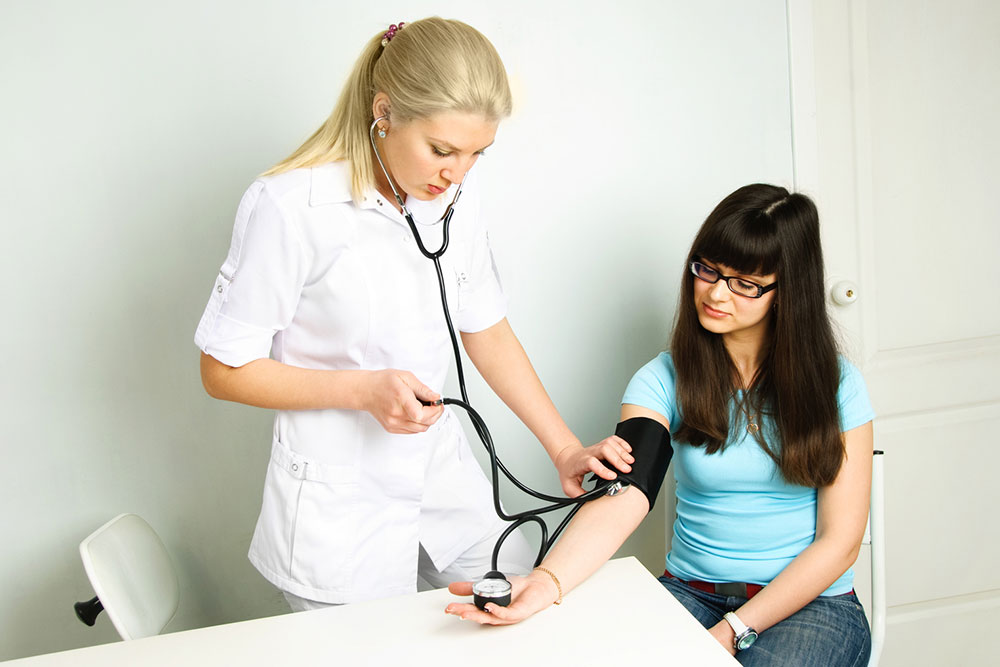5 Healthy Eating Habits To Manage Pulmonary Hypertension
Pulmonary hypertension is high blood pressure that affects the blood vessels in the lungs and heart. Pulmonary hypertension cannot be cured, but doctors usually prescribe treatments like medication and surgery to manage the symptoms. Along with that, making some changes to dietary habits is effective in managing the condition. Doctors say that one can manage the disease better if they steer clear of foods and dietary habits that can elevate blood pressure or increase weight and aggravate the symptoms.

Controlling salt and sodium intake
The heart is already working harder to pump blood to the lungs through narrowed arteries if an individual has pulmonary hypertension. And excess salt consumption causes the body to retain fluid, further pressurizing the heart to pump blood throughout the body. This can gradually lead to swelling in the legs and abdomen and increase shortness of breath. Reducing the amount of salt in the diet is the best treatment method to combat this symptom of pulmonary hypertension. Also, it’s important to understand that sodium and salt are not exactly the same thing, which means a low-salt diet is not necessarily low in sodium. Studies have found that a low-salt diet is particularly helpful for pulmonary hypertension treatment when combined with a diet high in minerals like calcium, magnesium, phosphorus, and potassium.
Experts state that gradually decreasing the amount of salt in the diet can help one to stop noticing its absence and appreciate the natural flavor of food. Other ways of cutting back on salt intake are to read the labels before picking food off the shelves as packaged foods tend to have high salt content and to avoid sprinkling extra salt from the shaker. Also, when one develops a taste for foods with less salt, they can stop adding salt while cooking, since getting the right flavor needs too much salt.
Limiting fluid intake
People are always instructed to drink more water to keep their bodies well hydrated and healthy, but this doesn’t go well with people undergoing pulmonary hypertension treatment. They are often instructed not to drink more than two liters or 2000cc of fluids in a day. Restricting fluid intake is important to prevent or reduce swelling and fluid retention in the body, and pulmonary hypertension treatment involves monitoring the daily fluid intake to cope with this symptom. This can be done by sipping fluids from cups of the same size and measuring how many of those cups make 2 liters. Also, it’s important to measure all fluids, including gelatin, soup, ice, soda, and coffee.
Weight gain is the most obvious sign of fluid retention in the body, so people with pulmonary hypertension should weigh themselves daily as part of the treatment. If one gains 3 to 5 pounds in a day or gains weight for 2-3 consecutive days, they must visit their doctor immediately. Experts also recommend patients to maintain a food journal to gauge their salt and fluid intake and understand how much more they can have in the day while keeping fluid retention at bay.
Relieving nausea and vomiting through dietary changes
Some people with pulmonary hypertension can feel nauseous while undergoing treatment through medications. This can force the body to get rid of food it considers unsuitable through vomiting, and excess vomiting can be dangerous as it causes loss of fluid and necessary minerals, which can lead to electrolyte imbalance and dehydration. Also, nausea is one of the signs of heart failure due to the worsening of the condition, but patients can make certain dietary changes to avoid feeling nauseous. Experts recommend not eating foods in large quantities, not drinking too much water with meals, and not drinking too many carbonated beverages. Patients must also avoid eating fatty foods as fats can keep the food in the stomach for longer and increase the risk of vomiting. Another thing to remember is that one should always sit up while eating and never lie down immediately after a meal.
Managing weight with diet
Maintaining a healthy body weight is extremely important for managing pulmonary hypertension effectively, and the best way to do it is by counting calories and managing one’s diet accordingly. Experts advise that patients must not consume more calories than what’s required for maintaining a healthy weight. So, the first thing to do is calculate how many calories one’s body needs according to their age, gender, height and weight, and activity levels. Then, one needs to become aware of their unhealthy eating habits to ensure that they don’t overshoot the calorie consumption limit. Some dietary habits to avoid for effective pulmonary hypertension treatment are eating small bites here and there in between meals, binging on foods, and consuming high-calorie drinks like soda and wine.
Avoiding the consumption of stimulants
Staying away from stimulants like caffeine and alcohol is necessary for the effective treatment of pulmonary hypertension symptoms. These stimulants can raise blood pressure levels, which is extremely dangerous for people with this disease. Also, alcohol is a respiratory depressant and results in a slower rate of breathing. It is even more harmful to those with breathing problems, which is common among people with this condition. If one craves a hot beverage in the morning, they can opt for healthy tea and coffee substitutes like chicory. Some other healthy substitutes that do not elevate blood pressure levels are matcha tea and lemon water.




